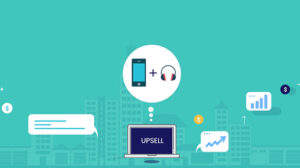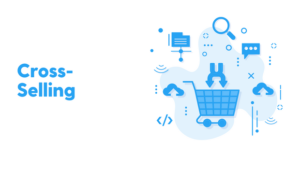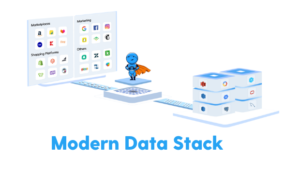In today’s business landscape, customer engagement has become one of the most important metrics for measuring business success. Engaged customers are more loyal, spend more money, and are more likely to recommend a business to others. In this post, we will explore the benefits of a data-driven approach to customer engagement, and provide actionable steps for businesses looking to improve their customer experience, satisfaction, and retention.
What is Customer Engagement
Customer engagement refers to customers’ interactions and experiences with a business throughout their customer journey. It involves building relationships with customers, understanding their needs and expectations, and delivering personalized experiences that meet those needs.
Importance of customer engagement for businesses: Customer engagement is essential for businesses looking to build long-term relationships with their customers. Engaged customers are more likely to stay loyal, make repeat purchases, and refer others to the business. Additionally, engaged customers provide valuable feedback and insights that businesses can use to improve their products, services, and overall customer experience.
Key Metrics for Measuring Customer Engagement
- There are several key metrics that businesses can use to measure customer engagement, including:
Customer satisfaction (CSAT) scores: Measures how satisfied customers are with their overall experience with the business. - Net Promoter Score (NPS): Measures the likelihood that customers will recommend the business to others.
- Customer lifetime value (CLV): Measures the total value that a customer brings to the business over their lifetime.
- Repeat purchase rate: Measures how often customers make repeat purchases from the business.
- Engagement rate: Measures how often customers interact with the business through various channels, such as social media or email.
Customer Engagement Examples
For engaging customers, a seller can use many tactics, let’s go through a few essential ones along with examples.
| Way/Context of Customer Engagement | Real Life Example |
| Social Media Engagement | A customer posts a photo of a meal they had at a restaurant on Instagram, tagging the restaurant’s account. The restaurant responds by liking the photo and leaving a comment, thanking the customer for their visit and asking them to come again. This interaction encourages further engagement and helps the restaurant create a positive relationship with the customer. |
| Email Newsletters | A clothing retailer sends out a monthly email newsletter to customers, highlighting new arrivals, special offers, and fashion tips. Customers can reply to the newsletter with questions or feedback, and the retailer can respond accordingly. This engagement helps the retailer maintain an ongoing relationship with customers, keeping them informed and interested in their products. |
| In-Store Events | A bookstore hosts a book signing event with a popular author. Customers can engage by attending the event, meeting the author, and purchasing signed copies of the book. This type of engagement encourages customers to visit the store, connect with the brand, and potentially make additional purchases. |
| Customer Surveys | A hotel sends out a post-stay survey to guests, asking for feedback on their experience. Guests can engage by providing their thoughts and suggestions. The hotel can then use this information to improve their services and address any concerns. This engagement helps the hotel maintain a positive relationship with guests, as they feel heard and valued. |
| Online Communities | A video game developer creates an online forum for players to discuss gameplay, share tips, and report bugs. The developer actively participates in the community by responding to questions, acknowledging issues, and providing updates on fixes. This engagement fosters a sense of connection between the developer and players, which can lead to increased loyalty and word-of-mouth referrals. |
| Mobile App Personalization | A fitness app offers personalized workout plans and meal recommendations based on individual user data. Users engage with the app by inputting their preferences, goals, and progress. The app responds by adjusting the recommendations accordingly. Push notification along with personalized engagement helps users feel more connected to the app, as it is tailored to their unique needs and goals. |
| Live Chat Support | A customer visits an electronics store’s website and has a question about a product. They initiate a live chat with a customer service representative, who answers their question and provides additional information. This real-time engagement helps the customer feel supported and valued, increasing the likelihood that they will make a purchase and return for future needs. |
| Product Customization | A customer visits a jewelry store’s website and sees that they offer custom engraving. They can engage by selecting a piece of jewelry, inputting their desired engraving, and placing an order. This unique, personalized product encourages a deeper connection with the brand and can lead to repeat purchases and referrals. |
| Loyalty Programs | A coffee shop offers a loyalty program, where customers can earn points for every purchase and redeem them for free drinks or merchandise. Customers engage by signing up for the program, tracking their points, and redeeming rewards. This engagement helps create long-term relationships with customers, as they are incentivized to return and make additional purchases. |
| User-Generated Content | A cosmetics company runs a contest on social media, asking customers to share photos of their makeup looks using their products. Customers engage by creating and posting their looks, tagging the brand, and using a specific hashtag. This user-generated content not only engages customers but also helps the company gain exposure and reach a wider audience. |
Customer Engagement Strategies
Here are some strategies to improve customer engagement across different channels:
- Personalization:
- Tailor content, offers, and recommendations to individual customer preferences.
- Use customer data to create personalized experiences, such as addressing customers by their names in email campaigns.
- User Experience (UX) Optimization:
- Create a seamless and intuitive user experience on your website, app, or other digital platforms.
- Regularly test and optimize your platforms for better usability and faster load times.
- High-Quality Content:
- Produce engaging and informative content that resonates with your target audience.
- Use a variety of content formats such as blog posts, videos, infographics, and podcasts to cater to different preferences.
- Social Media Engagement:
- Interact with your audience on social media by responding to comments and messages promptly.
- Encourage user-generated content and share it on your social media platforms to foster a sense of community.
- Email Marketing:
- Craft compelling subject lines to increase open rates.
- Segment your email list and send targeted campaigns based on customer behavior, preferences, or demographics.
- Gamification:
- Introduce game-like elements such as points, badges, or leaderboards to incentivize users to engage with your content or products.
- Create contests, quizzes, or challenges to encourage customer participation.
- Customer Feedback:
- Actively seek customer feedback through surveys, reviews, or social media.
- Implement improvements based on feedback to demonstrate that you value your customers’ opinions.
- Omni-Channel Approach:
- Offer a consistent experience across all touchpoints, including online, mobile, and in-store.
- Integrate channels seamlessly to ensure customers can move between them without any friction.
- Incentives and Loyalty Programs:
- Offer exclusive discounts, promotions, or rewards to encourage customer engagement and repeat purchases.
- Develop a loyalty program to reward customers for their ongoing engagement and support.
- Customer Support:
- Provide timely and effective customer support through multiple channels, such as email, phone, live chat, or social media.
- Train your support staff to be empathetic, helpful, and proactive in addressing customer concerns.
By implementing these strategies, you can improve customer engagement, which in turn can lead to increased customer satisfaction, loyalty, and ultimately, business growth.
What is a Data-Driven Approach to Customer Engagement
A data-driven approach to customer engagement involves using data and analytics to better understand customer behavior, preferences, and needs. This approach allows businesses to make data-backed decisions about how to engage with customers, and deliver personalized experiences that meet their needs.
Why use a Data-Driven Approach
Using a data-driven approach to customer engagement allows businesses to:
- Gain a deeper understanding of customer behavior and preferences.
- Deliver personalized experiences that meet customer needs.
- Optimize engagement strategies based on data and analytics.
- Measure the impact of engagement strategies on business metrics.
Key elements of a Data-Driven Approach
A data-driven approach to customer engagement involves several key elements, including:
- Segmentation: Dividing customers into groups based on shared characteristics or behaviors.
- Journey mapping: Mapping out the customer journey to understand the touchpoints and interactions that customers have with the business.
- Feedback analysis: Collecting and analyzing customer feedback to gain insights into customer preferences and pain points.
- Personalization: Delivering personalized experiences that meet the unique needs and preferences of each customer.
- Monitoring and optimization: Continuously monitoring and optimizing engagement strategies based on data and analytics.
Steps to Implementing a Data-Driven Approach to Customer Engagement
Step 1: Identify customer segments The first step in implementing a data-driven approach to customer engagement is to identify customer segments. This involves dividing customers into groups based on shared characteristics or behaviors, such as demographics, purchase history, or engagement levels. This allows businesses to deliver targeted messages and experiences that resonate with each customer segment.
Step 2: Map the customer journey The next step is to map the customer journey to understand the touchpoints and interactions that customers have with the business. This involves identifying the various stages of the customer journey, such as awareness, consideration, and purchase, and mapping out the touchpoints and interactions that customers have at each stage. This allows businesses to identify pain points and areas for improvement in the customer experience.
Step 3: Collect and analyze customer feedback The third step is to collect and analyze customer feedback to gain insights into customer preferences and pain points. This can be done through various channels, such as surveys, reviews, or social media listening. The feedback can then be analyzed to identify trends and patterns, and inform decision-making about how to improve the customer experience.
Step 4: Personalize customer engagement The fourth step is to deliver personalized experiences that meet the unique needs and preferences of each customer segment. This can be done through various channels, such as personalized emails, targeted ads, or customized product recommendations. Personalization allows businesses to build stronger relationships with customers and increase engagement levels.
Step 5: Implement and monitor engagement strategies The final step is to implement and monitor engagement strategies based on data and analytics. This involves setting goals and KPIs, and regularly monitoring engagement metrics to assess the impact of engagement strategies on business metrics. Based on the results, engagement strategies can be optimized and improved over time.
Benefits of a Data-Driven Approach to Customer Engagement
- Improved customer experience: By using data to personalize customer interactions and messaging, businesses can enhance the customer experience, making them feel valued and understood.
- Increased customer satisfaction and loyalty: By using data to understand customer preferences and behavior, businesses can create targeted marketing campaigns and offers that resonate with customers, increasing their satisfaction and loyalty.
- Higher customer retention rates: Data-driven customer engagement allows businesses to anticipate and respond to customer needs, reducing churn and increasing customer retention rates.
- Increased revenue and profitability: By using data to understand customer behavior, businesses can optimize their marketing and sales strategies to increase revenue and profitability.
Challenges in Implementing a Data-Driven Approach to Customer Engagement:
Gathering and analyzing data: Businesses need to collect, organize, and analyze data from various sources to gain insights into customer behavior.
Integrating data sources: Data from various sources, such as social media, customer feedback, and sales data, needs to be integrated into a single database to provide a holistic view of customer behavior.
Ensuring data privacy and security: With increased data collection, businesses must ensure that customer data is secure and that privacy regulations are adhered to.
Aligning teams and processes: A data-driven approach to customer engagement requires collaboration and alignment across different teams and departments, including marketing, sales, and IT.
Conclusion: The future of Customer Engagement:
Trends in customer engagement include increased personalization, omnichannel marketing, and the use of artificial intelligence and machine learning to analyze customer behavior and provide personalized recommendations.
Continuous improvement is critical to customer engagement, as customer behavior and preferences are constantly evolving. Businesses must regularly analyze data, seek customer feedback, and adjust their strategies to meet changing customer needs.
Businesses must invest in data collection, analysis, and integration tools to successfully implement a data-driven approach to customer engagement. They must also prioritize data privacy and security and ensure that teams and processes are aligned. By doing so, businesses can improve the customer experience, increase customer satisfaction and loyalty, and drive revenue and profitability.
At Saras Analytics, we have helped hundreds of brands with their modern data stack and growth analytics. Contact us today to learn how you can leverage your data to drive profitability.













